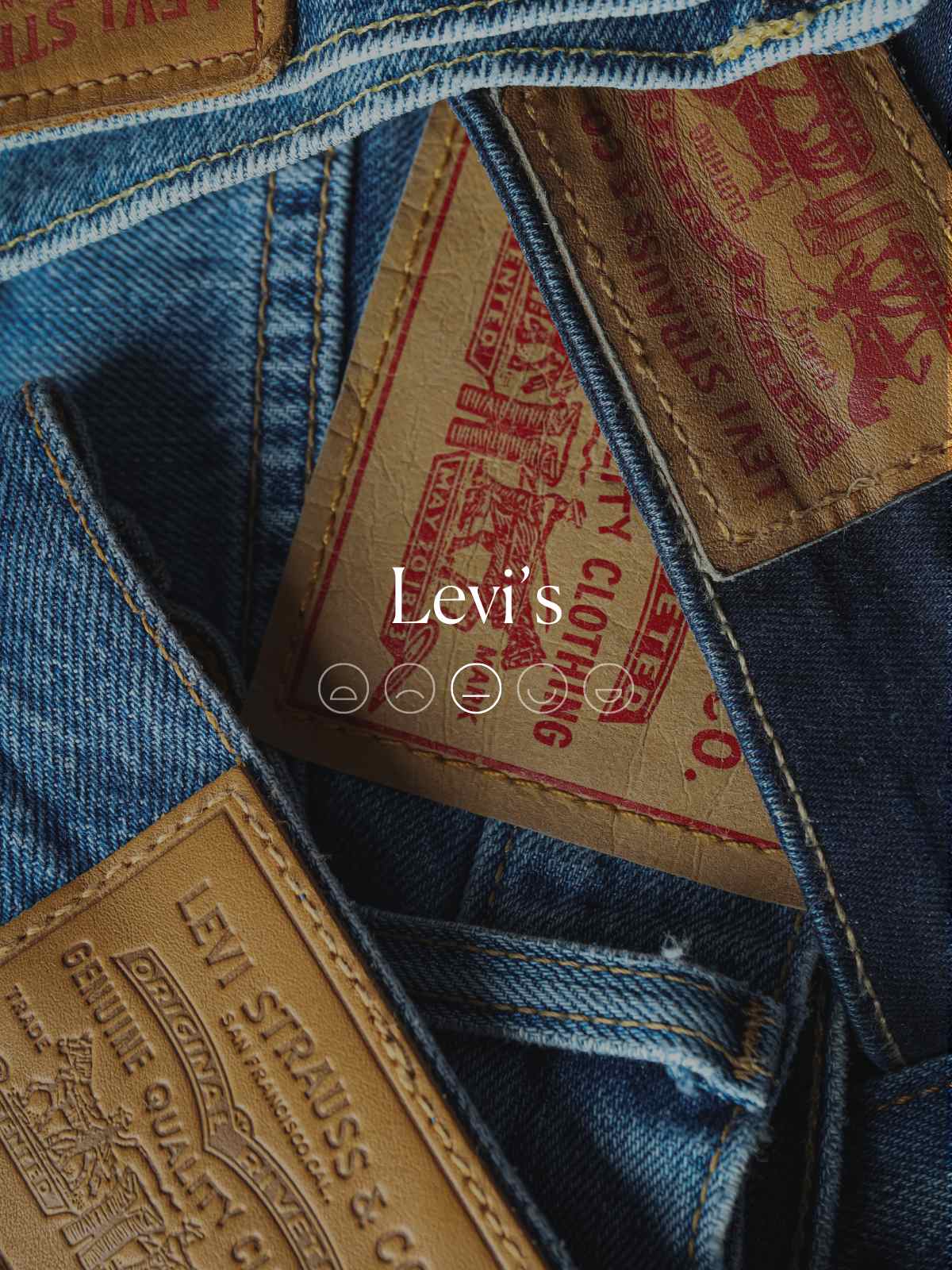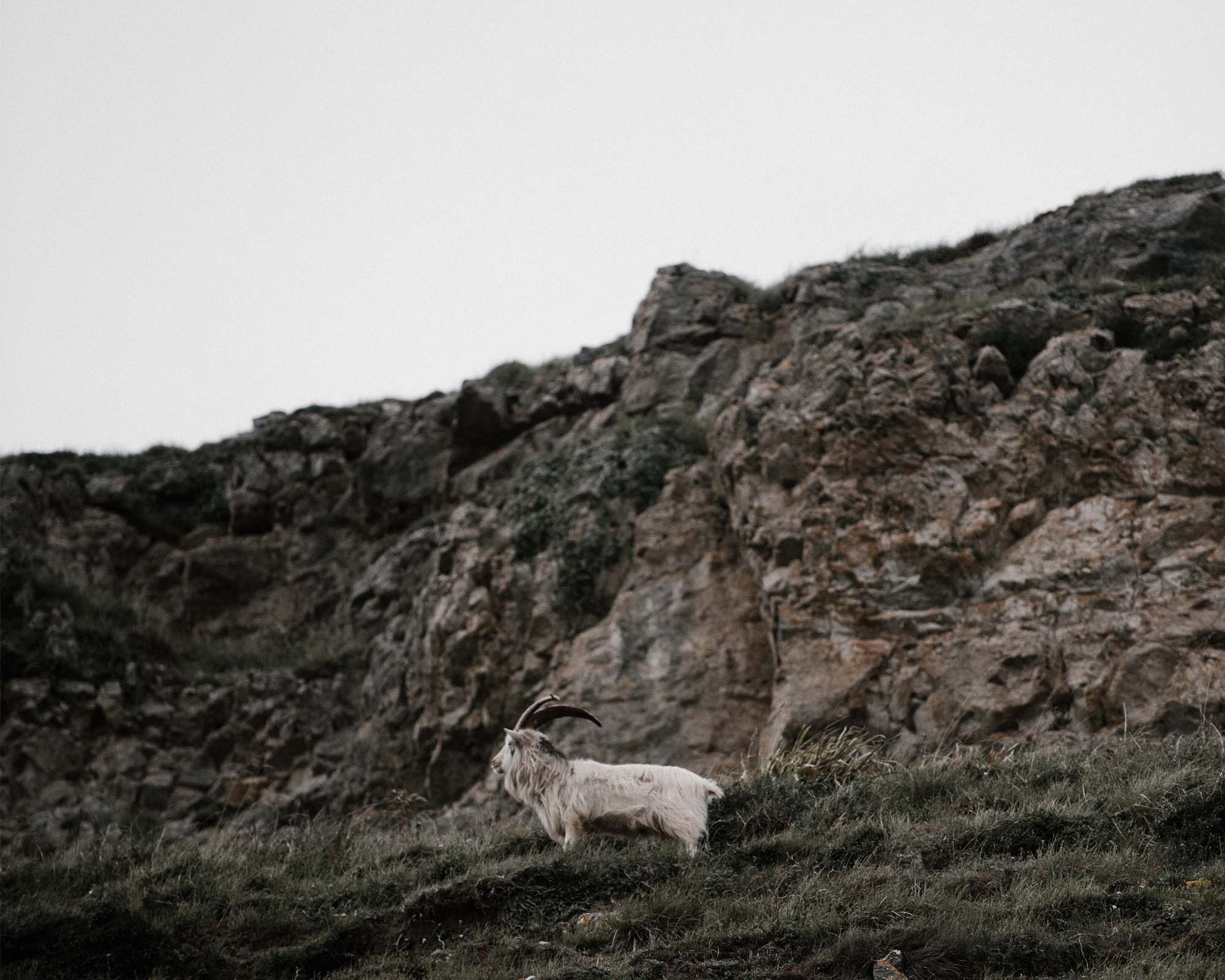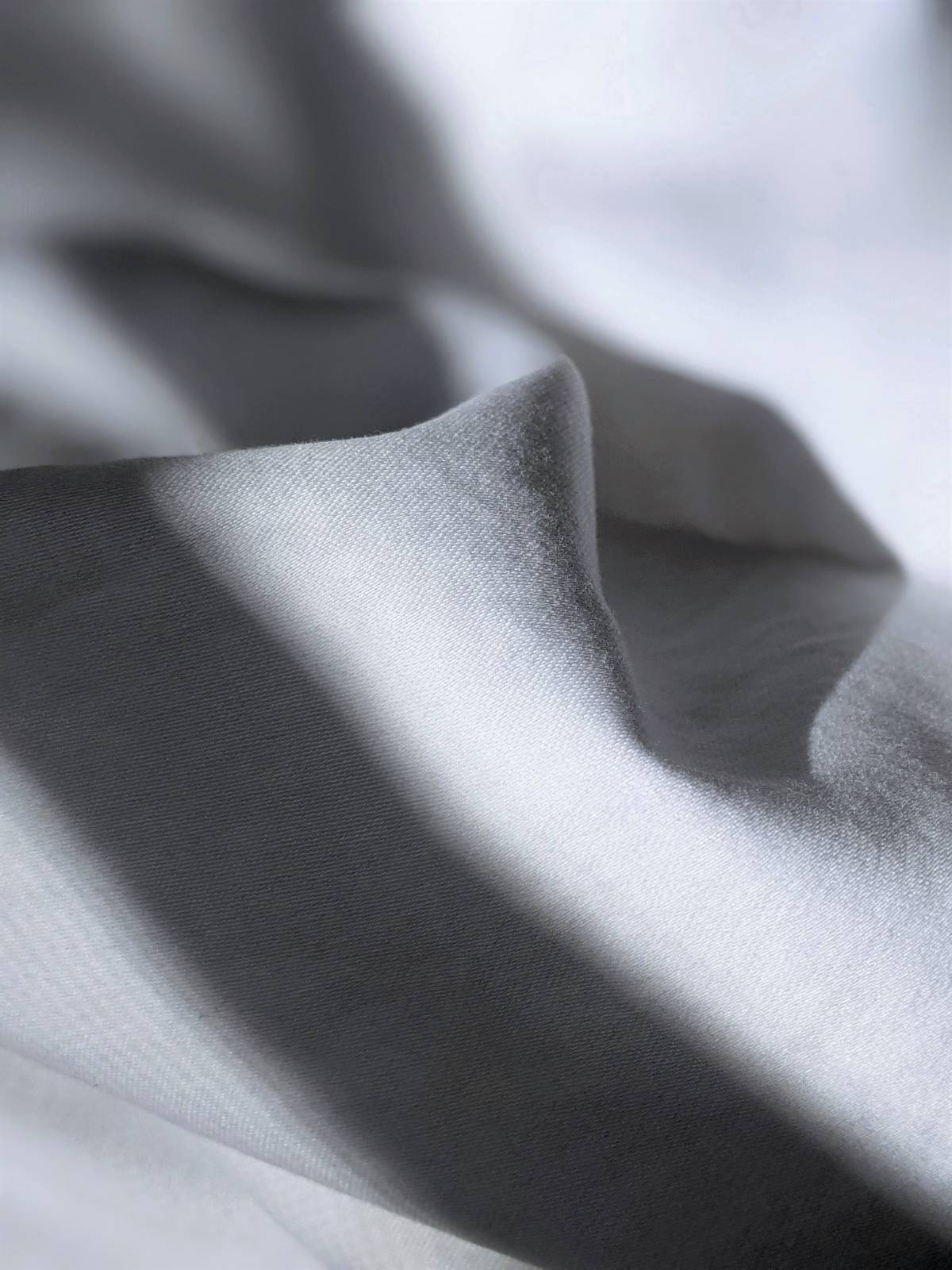Cashmere is considered an ultra-soft, luxurious, and expensive material, but it’s increasingly common and affordable. More accessible prices don’t mean improved values, though—here’s why cashmere is best avoided by the conscious consumer.
Is cashmere the same as wool?
While sheep and alpacas are shorn for their wool, it’s goats who are most often combed for cashmere production. Cashmere fibre is just another name for the hair of a specific breed of goat originating in Kashmir, India, where cashmere production is said to have begun around the 13th century.
Unlike the vast majority of wool production, most cashmere goats live nomadically with herders rather than confined to one fenced area for the entirety of their productive lives.
While advertisements may lead us to believe that goats grazing grasslands live happy lives and contribute positively to the ecosystem they are bred into, unfortunately, this is not necessarily the case. Is cashmere ethical or sustainable? Let’s take a look.
Cashmere: how a status symbol got so cheap
People used to pay a lot more for cashmere than they do today. This isn’t unique to cashmere, as the fast fashion industry continues to spew out all kinds of garments for lower market prices while the true cost is footed by the people, animals, and environments harmed in their making.
As more people (particularly those in the West) demanded more cashmere knitwear, an industry that requires four goats to be combed for a single sweater has had to ramp up its pace. This has led to far lower welfare standards for goats and reduced payments to herders and industry workers, causing socio-economic struggles.
Four goats need to be combed for a single cashmere sweater.
This alone doesn’t pull expensive cashmere off the ethical hook, though—most problems with cashmere laid out in this guide occur industry-wide to varying degrees.
Impact on animals
The ethical questions around cashmere primarily centre around animal welfare—in this case, the wellbeing of goats. Before we get into the problems goats face in the cashmere industry, it’s worth knowing more about the animals themselves.
Goats are clever, known to be inquisitive, at times a bit cheeky, and highly expressive. They communicate with each other, recognising both positive and negative emotions just through the sound of a call from another goat. Researchers have compared the way goats engage with humans to our relationships with dogs.
So how are these sentient animals—capable of feeling pleasure just as much as pain—treated in the cashmere industry?
Combing: not as ‘cruelty-free’ as it sounds
Many companies selling cashmere sweaters, scarves, and beanies will explain on their websites that cashmere goats aren’t shorn like sheep but gently combed. This claim can make it sound as though the process is comfortable for the animals. However, this isn’t the case.
While in Iran, Afghanistan, New Zealand, and Australia, cashmere goats are shorn—resulting in the same welfare problems found in wool supply chains—the majority of goats are combed with sharp-toothed metal combs. These combs can scratch deeply into their skin, sometimes causing bruises and injury.
The RSPCA, considered a conservative animal welfare organisation, does not support the use of these metal combs. Across Asia and most Middle Eastern countries where cashmere production is most common (China and Mongolia are the leading suppliers), here’s how cashmere collection usually goes down:
- Goats are tied up, all four of their legs wrapped together, so they are immobilised. This immobilisation is, as you would imagine, frightening and stressful.
- Goats are roughly combed for as long as an hour, on average. Investigations have shown goats screaming out in pain and distress during this long and gruelling process.
- While goats are often claimed to be combed when they are naturally moulting (shedding their thick winter coats), this moulting process varies based on unique differences between individuals. This means some goats in a herd may not be moulting come combing time.
A slaughter industry
Not only do cashmere goats suffer through the distressing combing process—as well as painful mutilations like castration (for males) without pain relief—they are killed once they are of little financial value.
Goats would naturally live to be about twelve years old, though some have lived far older. Goats treated as commodities in the cashmere industry don’t get to live out their full lifespan, as once their hair thins and brittles with age (just like our own), they are slaughtered.
In countries like Australia, goats are killed some years before reaching even half their natural lifespan. What’s more, if goats are born with a coat of hair that is considered “the wrong colour”, or if their hair isn’t thought of as “high quality” enough, they’ll be killed far sooner.
Across leading cashmere suppliers China and Mongolia, there are practically no laws protecting goats from cruelty. Here, investigations have shown goats to be killed while fully conscious.
Impact on humans and their land
While research shows that jobs involving slaughtering animals can lead to severe negative mental health outcomes, cashmere herders face other problems, too.
Reporting has consistently shown that rising demand for cashmere in the West is tied to a cashmere-debt cycle and poorer social outcomes for those working in the industry. It has also been directly linked to rising climatic temperatures, land degradation, and even some native species endangerment.
This reality can be devastating for many nomadic herders who feel they have no choice but to contribute to this destruction for our cashmere demand.
Yes, I know my goats are harmful to our grassland and the more we have, the worse our land becomes. I get that. But this is how we earn our money. All I can do is watch my grasslands disappear.
Lkhagvajav Bish – nomadic herder
Bish’s words reflect the broader struggle that comes with knowing the cashmere industry is causing detrimental harm to the land herders live on while feeling there is no choice but to continue unless demand dies down again. If consumers shifted away from purchasing new cashmere due to its detrimental impacts, we would need to factor the wellbeing of herders into that shift and find new, more just and sustainable ways to economically support them going forward.
Impact on the planet
Here’s the good bit: cashmere is biodegradable and a renewable resource. As far as materials go, it is more eco-friendly than some others.
However, the agricultural side of cashmere does have planetary impacts: 65% of Mongolia’s once biodiverse grasslands have been degraded due to cashmere goat grazing, as well as the impact of the climate crisis. The breeding of ruminant animals like goats and sheep who burp methane is responsible for 472 million metric tons of CO2e each year. Removing this problem would be equal to taking 103 million cars off the road for a year.
What’s more, goats are notoriously unfussy eaters, ripping all sorts of plants up from the roots, contributing to biodiversity loss. The sharp hooves of these goats also cut into and can degrade the earth underneath them.
While this all sounds grim, researcher Bulgamaa Densambuu has some good news about these grasslands: “90% of this total degraded rangeland can be recovered naturally within ten years if we can change existing management. But if we can’t change today, it will be too late after five to ten years.”
Is there more ethical and sustainable cashmere?
Given the significant harm that cashmere production causes goats, herders, and the environment they share, conscious consumers’ best bet is to avoid new cashmere.
If you’re really keen on snuggling into the warm fibre, opting for the many well-made vintage or second hand garments knitted from the material is the ideal option.
Recycled cashmere is available on the market and is an eco-friendly option, though keep in mind that many partly recycled garments are blended with new cashmere.
As always, buying pre-loved and caring for the clothes you already have is the most ethical and sustainable way to get dressed. But if you’re looking for new knitwear and want to avoid cashmere (as well as wool), here are some more ethical and sustainable materials you might want to keep an eye out for:
- Recycled plant-based materials like cotton
- More sustainably, fairly sourced cotton such as GOTS certified cotton
- Hemp and hemp blends
- Tencel, which has similar thermo-regulating properties
- Organic linen
- Recycled or second hand synthetic materials (though these do still shed plastic microfibres—consider buying a Guppyfriend wash bag, which many brands encourage)
If you’re worried about keeping warm, remember that there are lots of technical fabrics and garments designed for staying toasty made from recycled human-made materials, as well as more innovative plant-based ones.




















